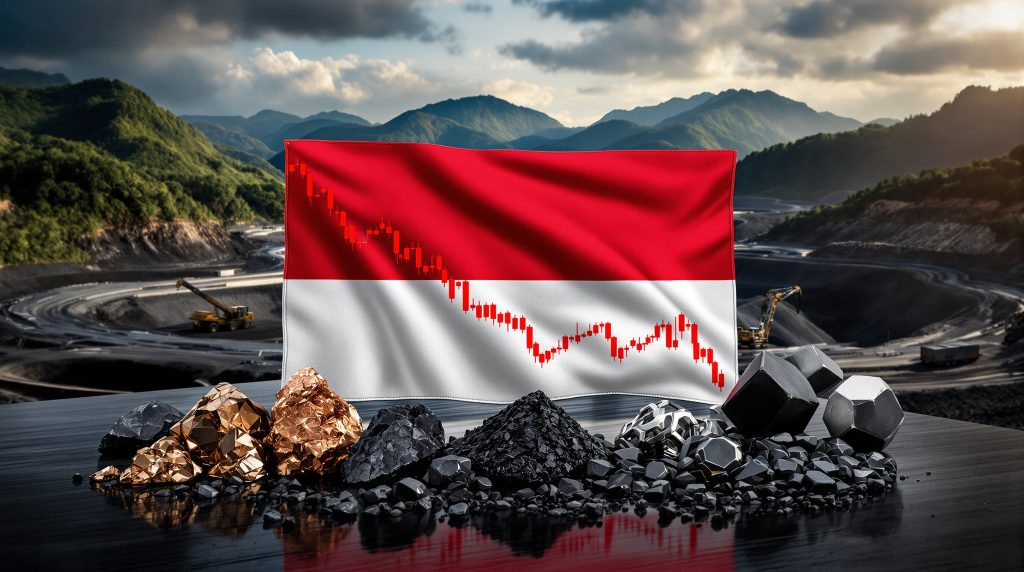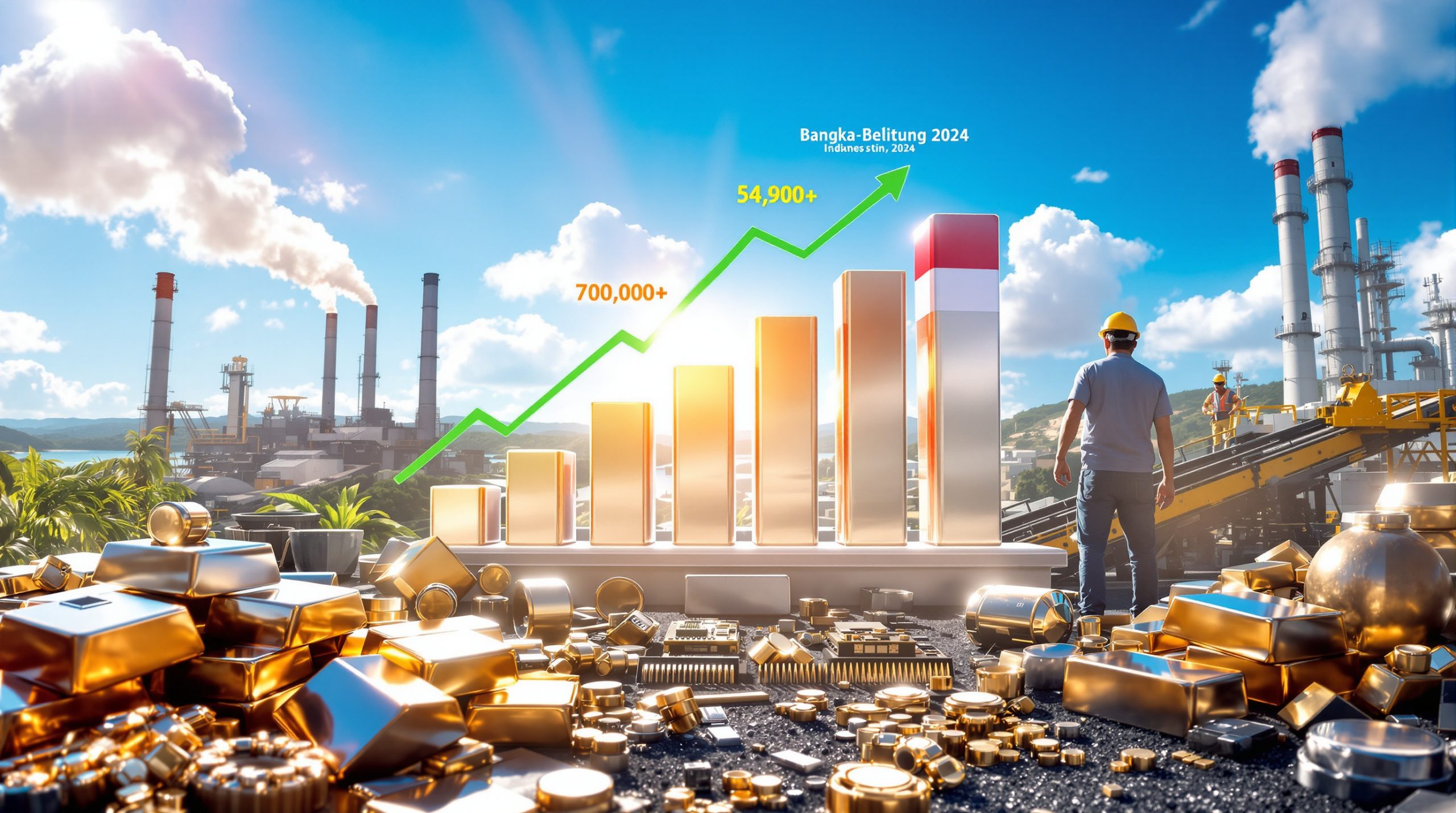Indonesia's New Mineral and Coal Pricing Policy: Market Implications and Industry Impact
Indonesia has recently issued a significant decree that fundamentally transforms the pricing mechanisms for minerals and coal in both domestic and international transactions. This regulatory shift eliminates the mandatory requirement for miners to use government-set benchmark prices as minimum thresholds, introducing greater flexibility while maintaining fiscal controls through a unique dual pricing system.
What Has Changed in Indonesia's Mineral and Coal Pricing Regulations?
The Indonesian government has removed the obligation for miners to use government benchmark prices as minimum prices in minerals and coal sales. This represents a major regulatory shift for one of the world's largest mineral and coal exporting nations, affecting numerous commodities including coal, nickel, copper, tin, cobalt, and bauxite.
Key Elements of the New Pricing Freedom
The policy change introduces several important modifications to Indonesia's resource pricing framework:
- Miners can now sell minerals and coal below government-set benchmark prices
- Production levies and tax obligations will still be calculated using benchmark prices
- The dual system separates commercial transaction prices from fiscal calculation bases
- The change applies across various strategic minerals important to global supply chains
The previous system, implemented on March 1st, 2025, had aimed to give Jakarta greater control over transaction values for both domestic and export sales. However, this rigid approach created friction with market realities and industry preferences, ultimately leading to the current policy revision.
Why Has Indonesia Modified Its Pricing Requirements?
Industry Feedback and Market Realities
This policy shift comes after substantial feedback from industry stakeholders who advocated for more flexible pricing mechanisms. Mining companies consistently expressed preference for the "Indonesian Coal Index" over government benchmarks due to its greater transparency, more frequent updates, and generally lower price points that better reflect market conditions.
The industry had found the previous rigid pricing system increasingly challenging to work within, especially as global commodity markets experienced volatility. The mandatory minimum pricing framework sometimes forced Indonesian producers into uncompetitive positions when market prices fell below the government benchmarks.
Strategic Economic Objectives
Indonesia's decision aligns with several broader economic and strategic objectives:
- Enhancing competitiveness of Indonesian mineral and coal exports in global markets
- Allowing miners to respond more dynamically to international price fluctuations
- Supporting the country's position as a leading global supplier of thermal coal and minerals
- Balancing regulatory oversight with market-driven pricing mechanisms
- Creating a more attractive investment environment for resource development
The change demonstrates Indonesia's pragmatic approach to resource governance, recognizing that excessive price controls can potentially hamper export growth and investment attraction in the mining industry evolution.
How Will This Impact Indonesia's Coal Export Performance?
Current Export Growth Trajectory
Indonesia's coal export sector has demonstrated remarkable growth recently, with thermal coal exports reaching 238 million tonnes in the first half of 2025—a substantial 20% increase compared to the previous year. This impressive performance has further solidified Indonesia's position as a dominant global coal supplier.
The country's ability to increase export volumes by one-fifth year-over-year demonstrates both the production capacity and international demand for Indonesian coal. These volumes represent significant economic value and foreign exchange earnings for the country.
Potential Market Advantages Under New Pricing
The new pricing flexibility could further strengthen Indonesia's export position by:
- Enabling more competitive pricing strategies to attract international buyers
- Allowing producers to negotiate deals that reflect real-time market conditions
- Potentially increasing export volumes through more attractive pricing
- Maintaining government revenue through benchmark-based tax calculations
- Creating greater agility in responding to market opportunities
Industry analysts suggest the ability to price below benchmarks will be particularly valuable during periods of market softness or when competing with other major coal-exporting nations like Australia, Russia, and South Africa.
What Are the Implications for Different Mineral Sectors?
Coal Industry Benefits and Adjustments
The coal industry stands to benefit significantly from the policy change, as it has been particularly vocal about pricing flexibility. The Indonesian Coal Index, which typically offers more market-responsive price points than government benchmarks, will likely become more influential in transaction pricing.
Coal producers can now:
- Negotiate contracts that better reflect actual market conditions
- Compete more effectively with other coal-exporting nations
- Adjust pricing strategies according to buyer requirements
- Maintain more stable production and export volumes during market downturns
Strategic Minerals Sector Effects
Beyond coal, the policy affects various strategic minerals critical to global supply chains:
-
Nickel: As a vital battery metal, pricing flexibility could enhance Indonesia's competitive position in global markets. Indonesia controls significant nickel importance insights essential for electric vehicle batteries and stainless steel production.
-
Copper: More market-responsive pricing may attract additional investment in Indonesia's copper sector, potentially accelerating development of new projects. The copper price prediction remains critical for electrical infrastructure and renewable energy technologies.
-
Tin and bauxite: Greater pricing freedom could help producers navigate volatile market conditions, particularly important for these commodities that have experienced significant price fluctuations in recent years.
-
Cobalt: Emerging as an important battery material, flexible pricing could support sector growth and investment in processing facilities within Indonesia.
The policy change comes at a strategic time when critical minerals are experiencing growing demand from energy transition technologies, potentially positioning Indonesia to capture greater market share.
How Does This Connect to Indonesia's Resource Investment Strategy?
Strategic Development Projects Pipeline
The pricing policy change complements Indonesia's broader resource development strategy. The mining ministry has identified 18 projects valued at approximately $38.6 billion aimed at developing the nation's natural resources. These projects have been highlighted for potential investment through Indonesia's sovereign wealth fund, Danantara.
This substantial project pipeline demonstrates Indonesia's commitment to resource sector development, with the new pricing flexibility potentially improving the economic viability and attractiveness of these projects to investors.
Danantara Sovereign Wealth Fund's Role
Danantara plays a crucial role in President Prabowo Subianto's economic growth strategy, which targets ambitious 8% growth by 2029. The fund's mandate includes:
- Managing shares of state-owned enterprises
- Reinvesting dividends into commercial ventures
- Supporting strategic resource development projects
- Balancing national interests with commercial viability
Launched in 2025, Danantara represents a significant institutional innovation in Indonesia's approach to resource wealth management. The new pricing policy creates a more attractive environment for the fund's investment targets by potentially improving project economics through market-based pricing.
What Market Reactions Have Emerged Following the Policy Change?
Mining Industry Stakeholder Perspectives
Initial reactions from industry participants suggest the policy change has been well-received, particularly by those who have advocated for the Indonesian Coal Index as a pricing mechanism. This index is valued for its:
- Greater transparency compared to government benchmarks
- More frequent updates that reflect current market conditions
- Generally lower price points that enhance competitiveness
- Better alignment with international market pricing mechanisms
Mining companies have long preferred market-based pricing systems that offer flexibility and responsiveness to changing conditions, making the policy shift a welcome development for operational planning and risk management.
Competitive Positioning Effects
The pricing flexibility positions Indonesian mineral and coal producers more favorably against international competitors by:
- Allowing strategic pricing decisions during market downturns
- Reducing regulatory barriers to market-responsive transactions
- Creating more level competition with producers from countries with market-based pricing
- Supporting long-term customer relationships through more flexible contracting
These advantages could potentially lead to increased market share in key Asian markets, where price sensitivity often drives purchasing decisions.
How Will Government Revenue Streams Be Protected?
Taxation and Royalty Calculation Mechanisms
Despite allowing sales below benchmark prices, the Indonesian government has maintained a mechanism to protect revenue streams:
- Production levies will still be calculated based on benchmark prices
- Tax obligations will continue to use benchmark prices as their basis
- This approach ensures that government revenues are somewhat insulated from potential price discounting
- The dual system balances market flexibility with fiscal stability
This innovative dual pricing approach demonstrates Indonesia's creative solution to balancing commercial flexibility with fiscal responsibility, addressing both industry and government needs.
Long-term Fiscal Implications
The long-term impact on government revenue will depend on several factors:
- Potential volume increases offsetting any price discounting
- Market response to the new pricing flexibility
- Global commodity price trends for key minerals
- Success of strategic resource development projects
- Effectiveness of the dual pricing system in practice
Some analysts suggest that increased export volumes resulting from more competitive pricing could potentially increase overall tax and royalty collections, even if individual transactions occur below benchmark prices.
What Global Supply Chain Effects Might Result?
International Market Implications
Indonesia's policy change could have ripple effects through global mineral supply chains:
- More competitive Indonesian exports may influence global pricing benchmarks
- Increased export volumes could affect supply-demand balances in key markets
- Trading partners may benefit from more flexible pricing arrangements
- Competing producer nations may need to reassess their regulatory frameworks
As one of the world's largest suppliers of thermal coal and certain strategic minerals, Indonesia's pricing policies have outsized influence on global commodity markets and supply chains.
Critical Minerals Considerations
For critical minerals essential to energy transition technologies, the policy change adds another dimension to global supply security considerations:
-
Nickel supply for electric vehicle batteries: Indonesia controls roughly 22% of global nickel reserves, making its pricing policies particularly significant for battery manufacturers.
-
Copper for renewable energy infrastructure: More competitive pricing could accelerate Indonesian copper project development, potentially increasing global supply.
-
Cobalt for high-performance batteries: As a complementary battery material to nickel, Indonesia's emerging cobalt sector could benefit from pricing flexibility.
-
Bauxite for aluminum production: As a major bauxite producer, Indonesia's pricing policies influence global aluminum value chains.
The policy shift comes as many nations are increasingly focused on securing supply chains for these strategic minerals, potentially positioning Indonesia as a more reliable and competitive supplier.
How Might This Policy Evolve in the Future?
Potential Regulatory Refinements
The current policy change may be part of a broader regulatory evolution:
- Monitoring mechanisms to prevent market manipulation or transfer pricing
- Potential adjustments to benchmark calculation methodologies
- Further refinements to balance market freedom with fiscal objectives
- Integration with Indonesia's downstream processing ambitions
Industry observers expect that the government will closely monitor the policy's implementation and impacts, potentially making further adjustments as market conditions and national priorities evolve.
Key Indicators to Monitor
Industry participants should watch several indicators to assess the policy's impact:
- Export volume changes in coming quarters
- Price differentials between actual transactions and benchmark prices
- Investment flows into Indonesian mining projects
- Competitor nation responses to Indonesia's policy shift
- Development progress on the 18 strategic projects identified by the mining ministry
These metrics will provide insight into both the commercial and fiscal success of the policy change, especially for those focused on mineral exploration importance.
FAQ: Understanding Indonesia's New Mineral and Coal Pricing Policy
What types of minerals are affected by this policy change?
The policy applies to multiple commodities including coal, nickel products, copper, tin, cobalt, and bauxite. Each mineral sector will experience different impacts based on their specific market dynamics and Indonesia's position in global supply chains.
Does this change affect Indonesia's domestic market obligations?
The pricing policy change does not directly alter Indonesia's requirements for domestic supply of certain minerals, though it may complement these policies by creating more flexible conditions for miners. According to Reuters, domestic market obligations remain an important part of Indonesia's resource governance framework.
How might this impact Indonesia's climate commitments?
The policy itself doesn't directly address climate considerations, though more competitive coal pricing could potentially increase coal exports, which has implications for global carbon emissions. Indonesia continues to balance its resource development with climate considerations.
What safeguards exist against potential market manipulation?
While the policy allows for below-benchmark pricing, the continued use of benchmarks for tax and royalty calculations provides some protection against potential transfer pricing or market manipulation concerns. This dual system creates a fiscal floor regardless of transaction prices.
Will this affect Indonesia's value-addition policies for minerals?
Indonesia maintains policies encouraging domestic processing and value addition for certain minerals. As PWC's mining guide indicates, the pricing flexibility may support these initiatives by potentially improving the economics of integrated mining and processing operations within Indonesia.
How does this compare to pricing policies in other resource-exporting nations?
Many major resource-exporting countries use market-based pricing systems without government benchmarks. Indonesia's approach represents a hybrid model that provides commercial flexibility while maintaining fiscal controls through the benchmark-based tax calculations.
Ready to Stay Ahead of Major ASX Mineral Discoveries?
Gain a market-leading edge with Discovery Alert's proprietary Discovery IQ model, delivering instant notifications on significant ASX mineral discoveries and turning complex data into actionable investment opportunities. Visit our dedicated discoveries page to understand how major mineral discoveries have historically generated substantial returns for early investors.




